Shiitake Dashi, which contains a large amount of umami components, not only tastes delicious but also allows you to enjoy the rich aroma of shiitake mushrooms. Among the dashi stocks used in Japanese cuisine, it is one of the easiest to make with minimal effort.
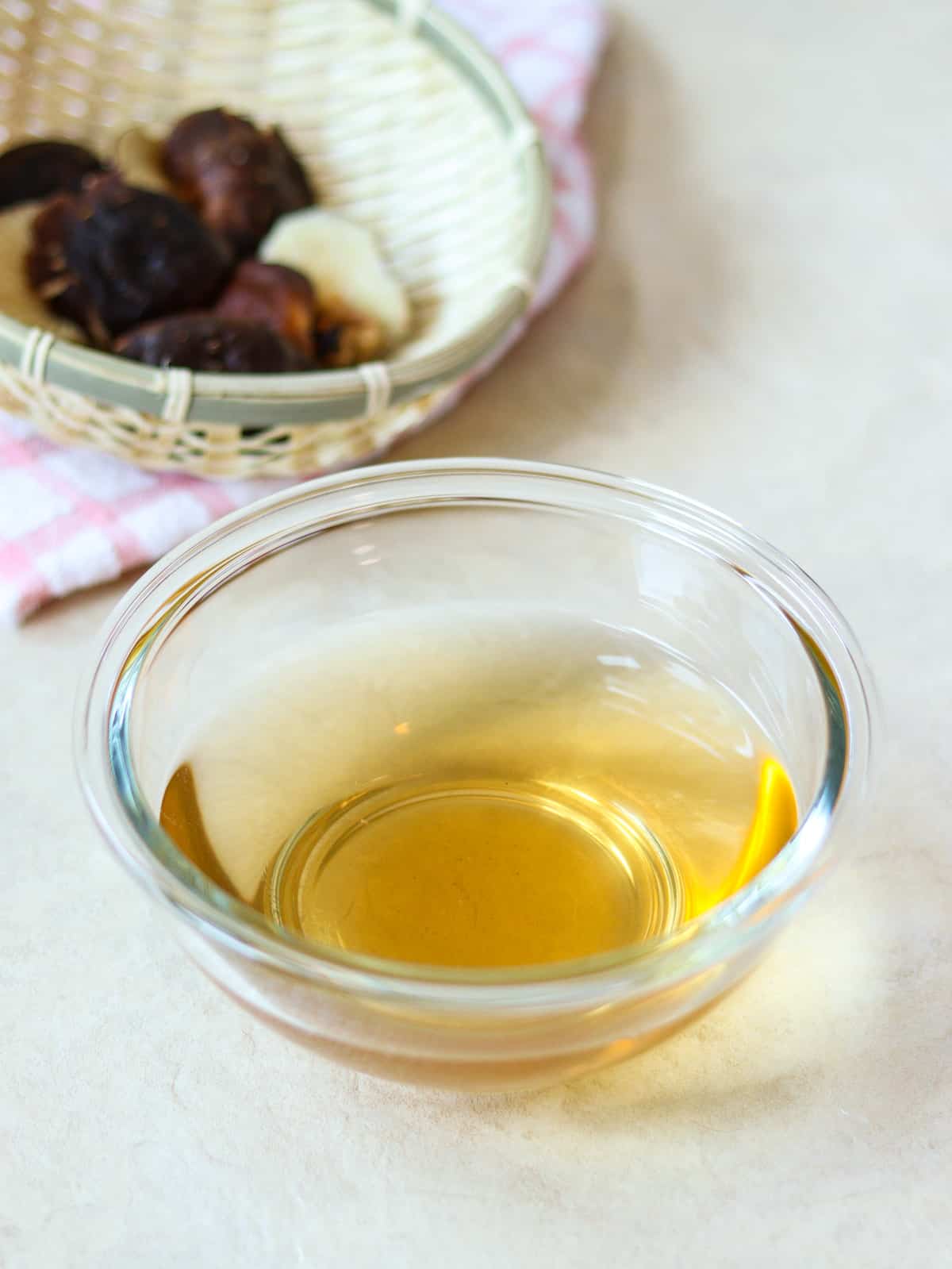
Jump to:
What is Shiitake Dashi?
Shiitake Dashi is a type of dashi stock used in Japan that is extracted from dried shiitake mushrooms when rehydrated in water. It doesn't require heating and can be prepared simply by soaking dried shiitake mushrooms in water. Similar to kombu dashi, it is also a great option for those following a plant-based diet.
In Japan, this stock is commonly used to make simmered dishes, soups, and rice dishes. It contains high levels of guanylic acid and glutamic acid, which are umami components that people find tasty, and is one of the classic dashi varieties in Japan, along with kombu dashi and bonito dashi.
Guanylic acid, the primary component of shiitake dashi, is created through the process of drying fresh shiitake mushrooms. Therefore, it is necessary to use dried shiitake mushrooms to make flavorful dashi, not fresh ones. After making dashi, the shiitake mushrooms can be used as an ingredient in cooking.
The reason for using shiitake mushrooms
Among the various types of mushrooms, shiitake mushrooms are used to make dashi stock due to their high umami content when dried.
In particular, they are known to contain over 10 times the amount of guanylic acid, their main umami component, compared to other mushrooms. This abundance of guanylic acid is a significant reason why shiitake mushrooms are used as an ingredient suitable for making dashi.
Since guanylic acid is an umami component not commonly found in other ingredients, adding just a small amount of shiitake dashi to soups can make them taste even better.
Crucial notes
When extracting stock from dried shiitake mushrooms, it is crucial to keep in mind the following factors: Do not heat them during the process of making dashi stock. Additionally, you should not use hot water.
When dried shiitake mushrooms are rehydrated, ribonucleic acid (RNA) is extracted during the process before it is converted to guanylic acid. RNA is most easily extracted in cold water at 41℉ (5℃) and is broken down into guanylic acid when heated. If shiitake mushrooms are rehydrated with hot water or boiled, it is difficult to extract RNA, and as a result, guanylic acid is hardly produced. Therefore, when making shiitake dashi, it is advisable to rehydrate them in cold water in the refrigerator for a longer period of time.
It is said that the ideal time to rehydrate dried shiitake mushrooms in cold water is 10 hours (depending on the type and thickness of the shiitake mushrooms). While you can obtain dashi with a similar color from shiitake mushrooms rehydrated for a few hours or those rehydrated for 10 hours, you will notice a difference in umami and aroma. However, if you leave the shiitake mushrooms in water for too long, a bitter taste may develop, so be sure to remove them within 24 hours.
Can sliced, dried shiitake mushrooms be used?
Shiitake dashi can also be made from sliced, dried shiitake mushrooms. However, it is important to note that the flavor extraction differs between sliced and whole shiitake mushrooms.
While enough umami components can be extracted from sliced, dried shiitake mushrooms in about half the time (around 5 hours) compared to whole ones, the aroma is less likely to be extracted. In other words, the aroma is weaker, but it is possible to make shiitake dashi in a shorter time. Additionally, if you are not fond of the aroma of shiitake mushrooms, using sliced ones might be more suitable for you.
Enhancing nutritional benefits
If you want to extract more nutrients from shiitake dashi, place dried shiitake mushrooms with their gills facing up in the sunlight for about 2 hours before rehydrating them. This step will increase the amount of vitamin D2 in them by approximately ten times.
Once generated, vitamin D2 can last for several months, so it is best to expose shiitake mushrooms to sunlight whenever you have the opportunity. However, this process is optional, as it enhances the nutritional value of the shiitake mushrooms without affecting the taste of the stock itself.
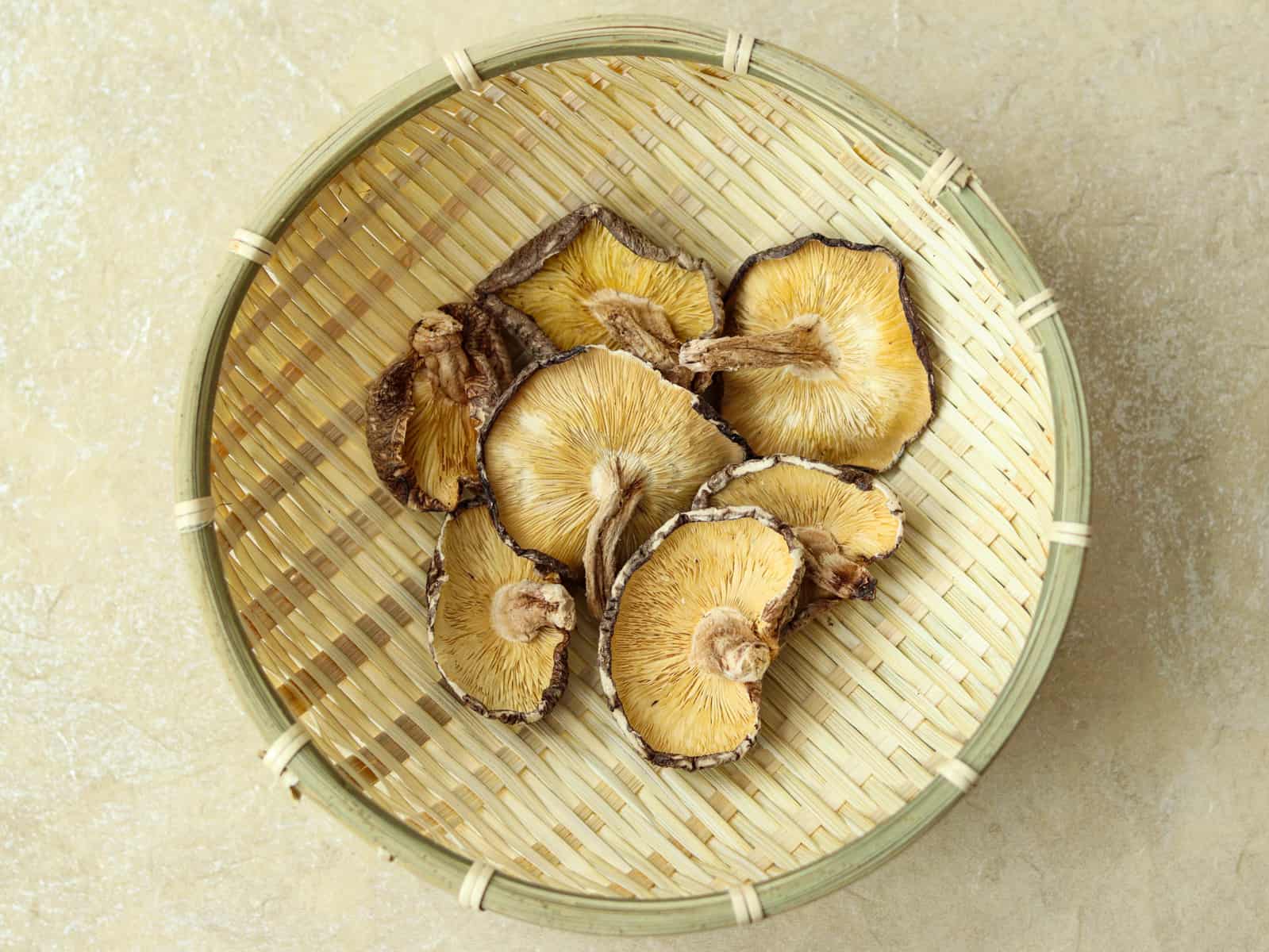
Quick ways to get prepared
The best way to make shiitake dashi is by slowly rehydrating dried shiitake mushrooms in cold water. However, if you need it immediately, I recommend grinding dried shiitake mushrooms instead.
This method allows you to extract the umami flavors of shiitake mushrooms without losing too much of their flavor and creates a dashi stock. You can also grind the stems, which are usually discarded.
Please note that shiitake mushroom powder made by grinding should be cooked before consumption. Although it is rare, consuming it uncooked might cause an allergic reaction.
Making awase dashi
When making dashi stock with two (or more) ingredients instead of just one, you can experience a stronger umami flavor due to the synergistic effect.
One ingredient that pairs well with shiitake dashi is kombu (dried kelp). By soaking dried shiitake mushrooms and kombu together in water, you can create a more flavorful dashi known as awase dashi (a combination dashi). The process is quite simple: just add the kombu at the same time as the shiitake mushrooms to the water. However, if you soak the kombu in water for more than 10 hours, the water might become cloudy and develop a distinct smell, so be sure to remove it after 3 to 9 hours.
When using shiitake dashi with animal proteins, the umami components from the proteins are released, so it is not always necessary to use awase dashi. However, for vegetarians who don't consume animal-based proteins, awase dashi is an excellent option for enhancing the flavor of their meals.
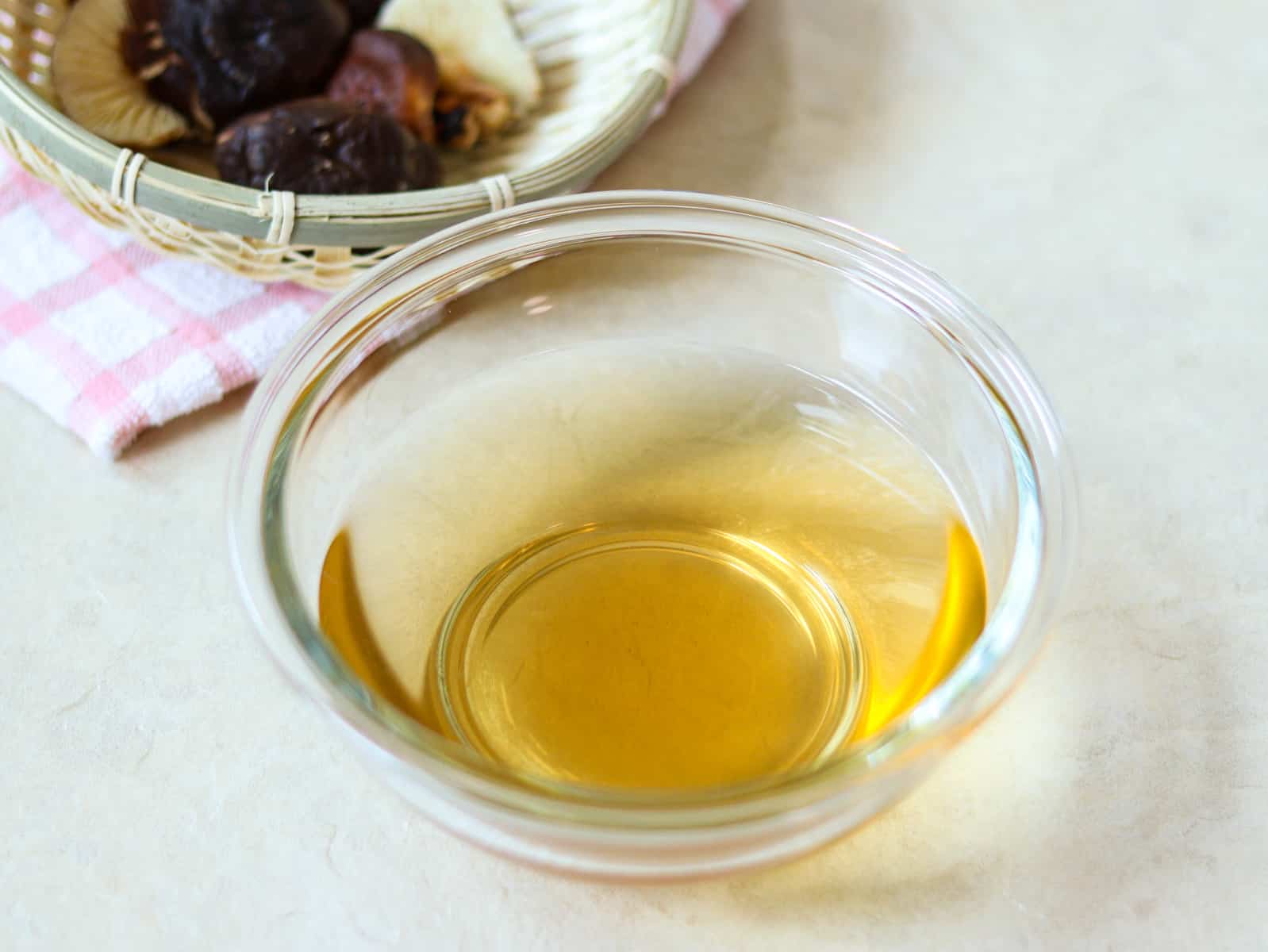
📋Step-by-step recipe
Ingredients
- 0.85 oz dried shiitake mushrooms (The amount of shiitake mushrooms should be approximately 5% of the water volume.)
- 2 cups water
Instructions
🕒 Total: 10 hrs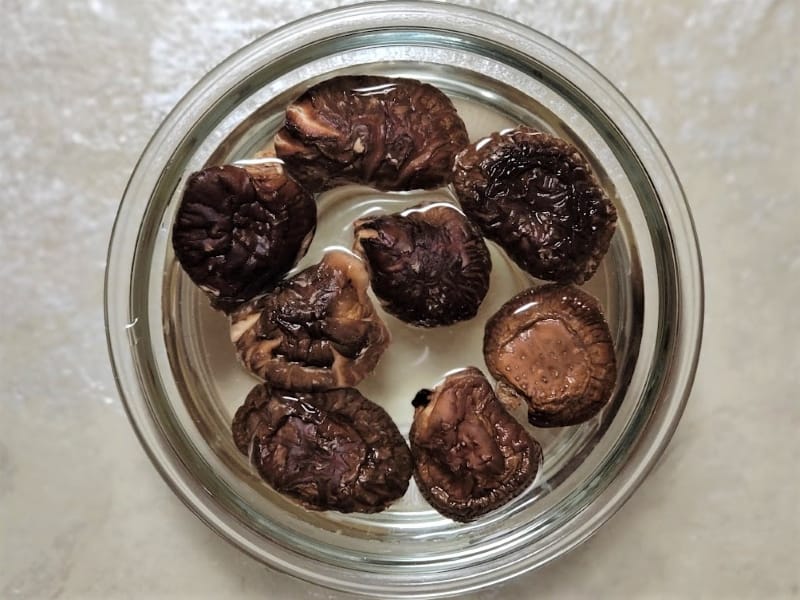
Step 1
Rinse dried shiitake mushrooms. Place them in a bowl of water and let them soak in the refrigerator for about 10 hours.
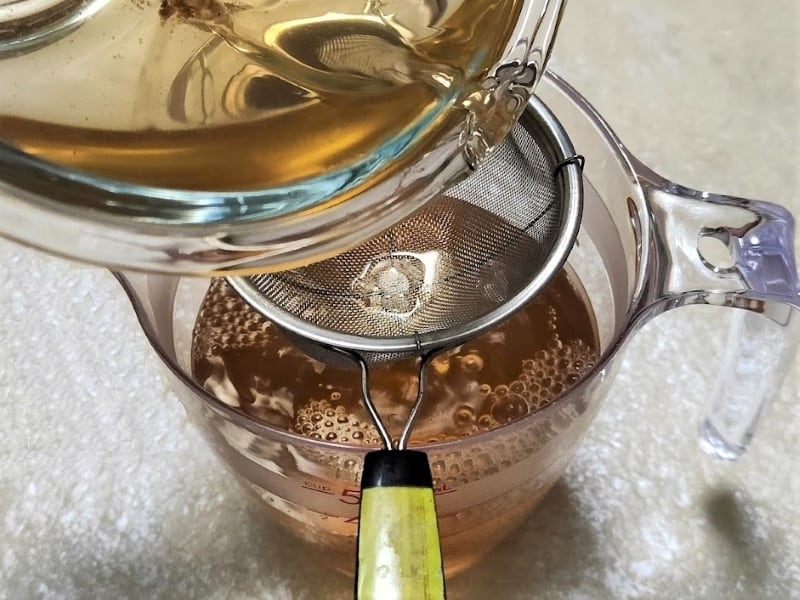
Step 2
Afterward, remove the rehydrated shiitake mushrooms and strain the soaking liquid through a fine-mesh sieve.
To store
You can store it in the refrigerator for up to 3 days.
Tips on how to make
- Rinse the dried shiitake mushrooms before soaking them in water. Dried shiitake mushrooms often have dust and sawdust on them from the production process. Don't worry; the umami component won't be lost even after they are cleaned.
- Soak the dried shiitake mushrooms in cold water. The optimal temperature for extracting the umami component from dried shiitake mushrooms is 41℉ (5℃). If the water temperature exceeds 77℉ (25℃), it may also release a bitter component. Therefore, it is recommended to rehydrate shiitake mushrooms in the refrigerator.
- Slowly rehydrate the dried shiitake mushrooms in water for about 10 hours. You will notice a significant difference in aroma and flavor between soaking for a few hours and soaking for 10 hours. However, if you leave the shiitake mushrooms in water for too long, a bitter taste may develop, so be sure to remove them within 24 hours.
Points to note when using your shiitake dashi
In the complex world of dried shiitake mushrooms, they also contain an enzyme known as nucleotidase, which breaks down the umami component guanylic acid. So, when nucleotidase is active, the guanylic acid extracted from shiitake mushrooms is reduced.
This enzyme is most active at temperatures between 104-140℉ (40-60℃). For this reason, when using shiitake dashi, it is recommended to cook it quickly over high heat and minimize the activation of nucleotidase.
However, shiitake dashi also has another aspect: when boiled, the RNA is less likely to convert to guanylic acid, which can lead to a loss of umami. Therefore, when cooking this stock, it is desirable to reduce the heat before it reaches a full boil.
In summary, by initially cooking the shiitake dashi over high heat and then reducing the heat to low just before boiling (when bubbles begin to appear), you can enjoy it without compromising its umami essence.
If you try this recipe, I’d love to hear what you think. Please consider leaving a review and star rating in the comments below. If you enjoyed it, I’d really appreciate it if you shared it with your friends.
Recipe card
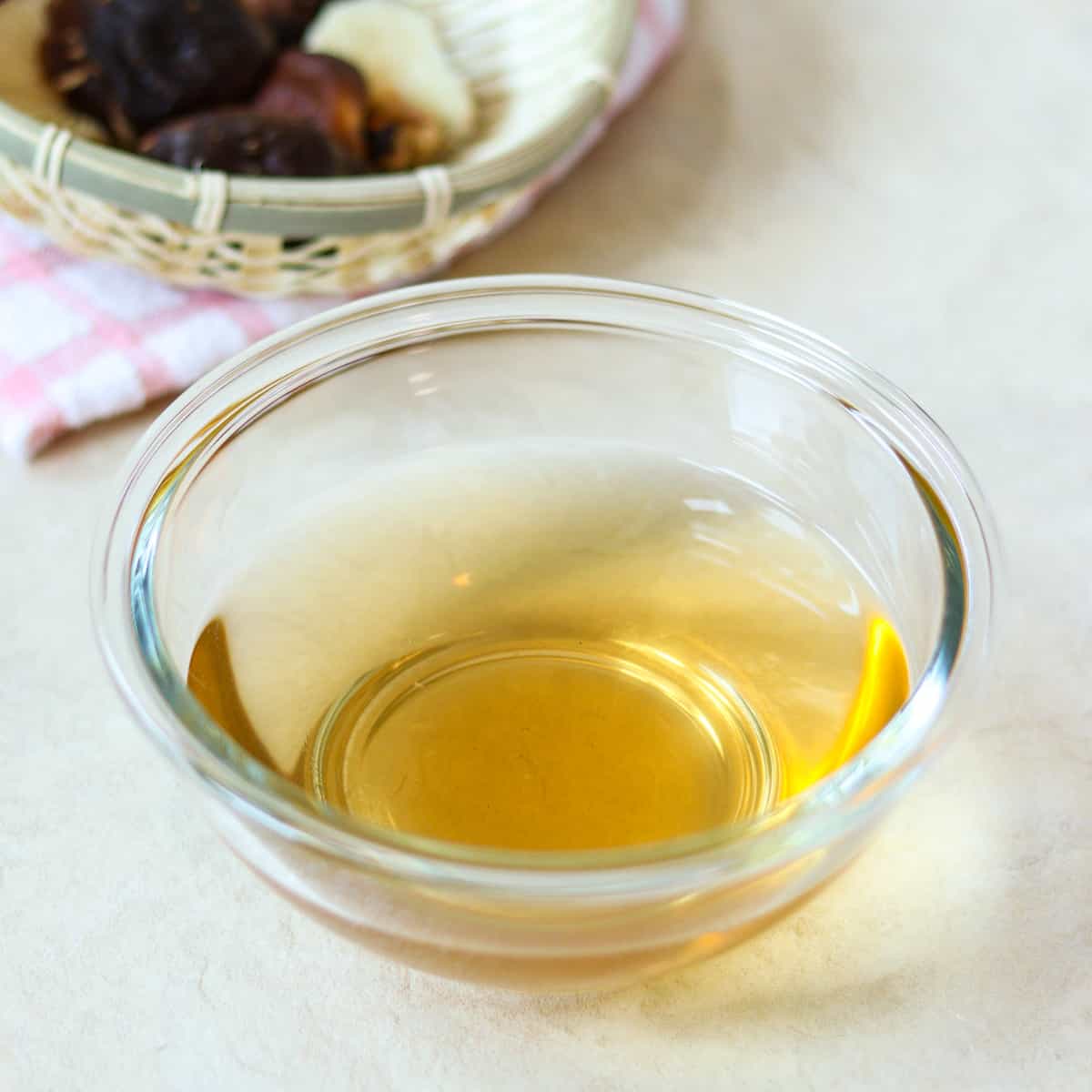
How to Make Shiitake Dashi (Mushroom Stock) Properly
Ingredients
- 0.85 oz dried shiitake mushrooms (The amount of shiitake mushrooms should be approximately 5% of the water volume.)
- 2 cups water
Instructions
- Rinse dried shiitake mushrooms. Place them in a bowl of water and let them soak in the refrigerator for about 10 hours.
- Afterward, remove the rehydrated shiitake mushrooms and strain the soaking liquid through a fine-mesh sieve.
Notes
- You can store it in the refrigerator for up to 3 days.
- The shiitake mushrooms can be used as ingredients in other dishes.


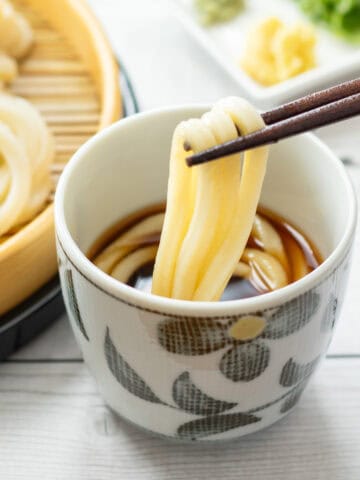
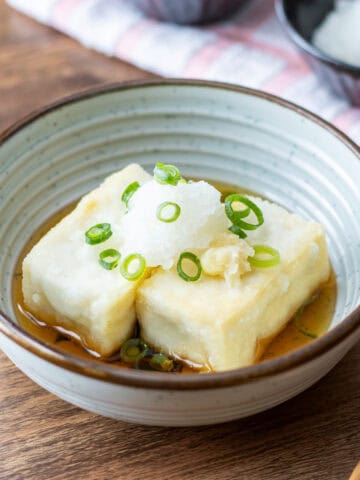

Leave a Rating and a Comment